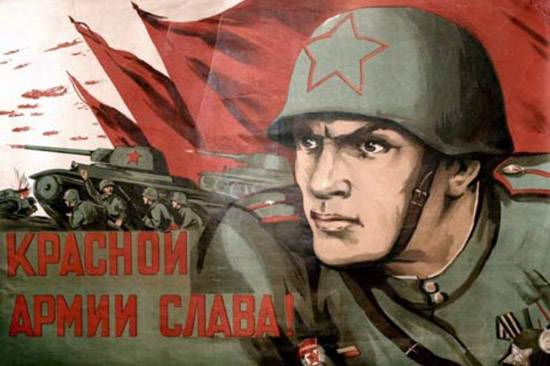Part 7: Turn 1 - Soviet Combat Phase: Reforming The Line

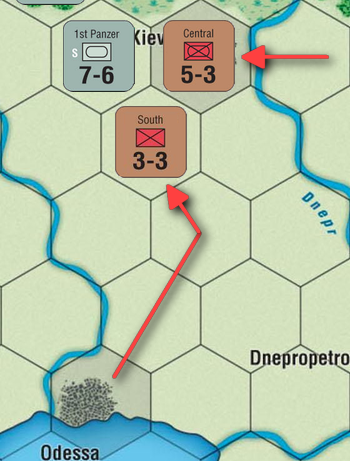
In the south, General-mayor Cokerpilot orders his men to enter Kiev and abandon Odessa. What's more, they are to close in on the 1st Panzer. The Central Front has been amassing armour, although its TOE is still not filled. It remains to be seen if they are supposed to perform a blocking action or rather proceed to try and blunt the Axis spearhead.
The Soviets were amongst the early adopters of armoured weaponry. In fact, it was probably they who created the first significant armour units in the early 1930s, when they were still co-operating in weapons research with the Germans (following the treaty of Rapallo). However, after the Spanish Civil War and the war with Finland they decided that such forces are cumbersome and difficult to operate, so they dissolved them and distributed the tanks to infantry units. Imagine the egg on the face of the Red Army planners when German Panzer groups attacked Poland and France. After 1940, the Soviets tried to reverse that decision, but it was way too late and in 1941 most of their units were criminally under-equipped with any sort of armour.
A Soviet mechanized unit is not akin to its German counterpart, the Panzergrenadiers. While the latter were supposed to be mobile infantry with organic tank support, the former resembled more a huge mass of tanks with organic infantry units. The foot-sloggers were still foot-sloggers and the Soviet were still developing a sufficiently sophisticated combined arms doctrine, but the idea was there - until 1941, where what few mechanized units the Red Army had were smashed near the border.
Many of the Soviet mechanized or armour units were using outdated equipment, such as the T-26 and T-35 tanks that were already proved obsolete by the Winter War. However, two of their models were amongst the best AFVs of the war: the T-34 (of which I'll talk some other time) and the KV-1.
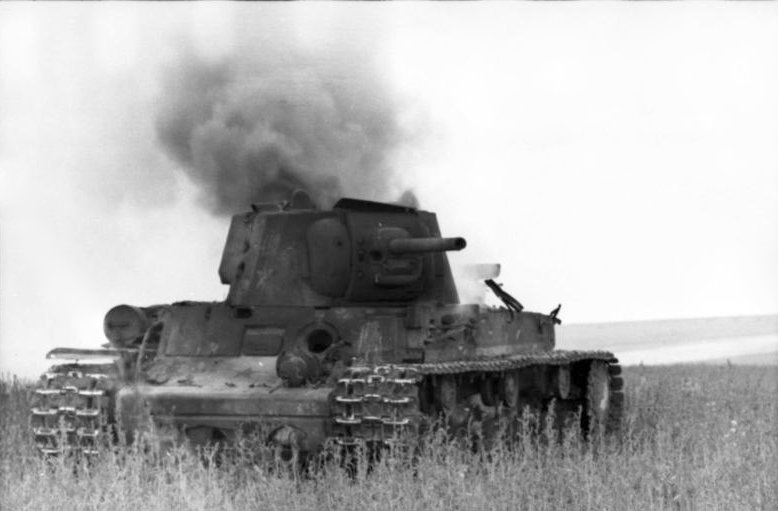
The KV-1 was a beast. It was huge, slow and lumbering across the battlefield. Its gun was decent, but not overwhelming, and its speed was abysmal (topping out at piddly 35 kph, you can probably ride a bicycle that fast), but its armour was unbelievably thick. In 1941 it was 90 mm thick at some locations, meaning that the (admittedly not top-notch at that point) German AT guns were unable to penetrate it, not to mention those of their tanks. The only defence the Heer had against this monstrosity was the splendid '88', a powerful towed AA/AT gun. On August 14 1941 five Soviet KV-1s clashed against German tanks near the town of Krasnogvardieysk, destroying 43 enemy AFVs with no losses. The Soviet commander in that skirmish, Lieutenant Zinoviy Kolobanov, counted a total of 135 hits on his tank without a single penetration.
Eventually, the appearance of serious German heavy armour meant that the KV series were becoming obsolete and by 1943 their production gradually ceased in favour of newer models. However, they were not withdrawn from combat and fought until destruction, meaning that some units still used them in 1945. Two KV-1s were captured by the Finns - both survived the war and are on display in museums today.
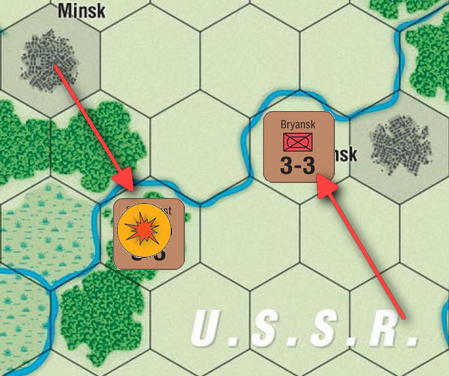
Upon arrival in Minsk the Southwest Front receives new orders, telling them to fall back to the more defensible Dneper line. Some of the troops and commanders grumble about not heading over to fight the fascists and abandoning both the city of Minsk and their comrades in the West Front, but their march proceeds without incident. The Bryansk front entrenches in a position to defend Smolensk.
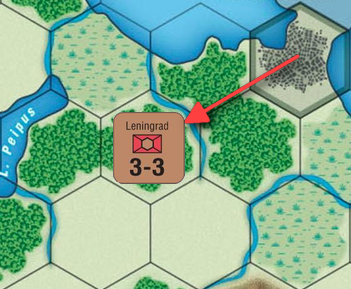
The Leningrad Front decides to take position on the outskirts of the city rather than wait for their foes within its walls. The fight must be taken to the enemy!
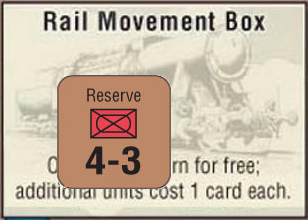
The Reserve Front is prepared for a strategic move to wherever it is needed.

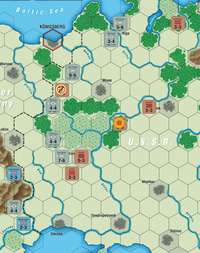
I need Fangz to place up to 5 (minimum 0) Target markers on hexes the Red Army will voluntarily attack this Combat Phase. Once that's done, the OKH Chief may decide to discard any number of cards to place Counterblow markers on the units they want the Soviets to attack. When that is done, the STAVKA Chief may decide in what order the battles will be resolved and commit cards (maximum one card per battle). Then Herpicle may play any cards he has left in response. Finally, the Axis commanders decide if they would accept a counterattack, if possible, and where they would prefer to retreat to if they will have to. The Soviet sector commanders decide what units take part in each battle and where they would try to advance if the enemy has to retreat.
Deadline: Friday, November 22nd, 7 PM GMT
